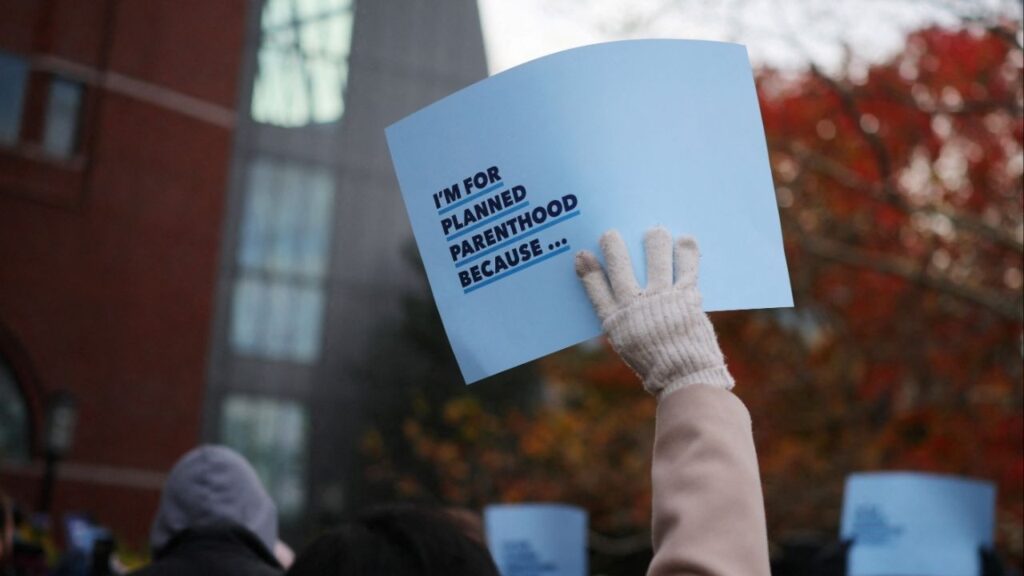Share
|
Getting your Trinity Audio player ready...
|
Thunderstorms in the Valley, winter storm watch in the Sierra, flood watches and warnings — yep, just another typical winter day here in California.
“Just stand by, and eventually something new is going to show up,” Jim Bagnall, a National Weather Service meteorologist in Hanford, said Friday morning.
But after another weekend of more wet, there might finally be some light at the end of the long, dark storm tunnel, Bagnall said. After the last storm moves on Tuesday there are no big storms heading this way at this point, he said.
But we’ll still have to get through this weekend, starting with lighter rain that is forecast to hit the Fresno area early Friday afternoon and continue into the evening.
Water is filling channels that typically carry trickles, including the St. Johns River in the Visalia area.
Water in the St. John’s River in Visalia, Calif. flows toward the Tulare Lake bed. pic.twitter.com/8Sml0crBUE
— Lewis Griswold (@fb_LewGriswold) January 13, 2023
A second and much bigger storm is due to arrive early Saturday and continue through Sunday, with the possibility of thunderstorms with lightning strikes from 6 a.m. to 6 p.m., and as much as 1.5 inches of rain in the Fresno area and snow falling at higher elevations in the Sierra. Rain falling at lower elevations and the foothills will increase the potential for localized flooding, mudslides, and rockslides.
Another storm arriving Monday and continuing into Tuesday will bring more rain but lower snow levels, Bagnall said. Is the Monday storm the last of the nine storms that had lined up in succession to pummel the state? Bagnall says he’s lost count.
But by the time the snow is done falling next week, another 4 to 8 feet of snow from the weekend and early week storms could be on top of the existing snowpack in the high Sierra, he said.
Snowpack Growing
That’s good news for California’s water resources for residential and agricultural uses, which benefit from the melting snowpack later in the year.
The water content of the snowpack is more than 200% of normal to date and more than 100% of the April 1 average, when it is historically at its peak, the state Department of Water Resources said in an Associated Press news story.
“The automated sensors are registering what they would consider a full seasonal snowpack, about what we would expect on April 1,” state climatologist Michael Anderson told reporters this week.
The snowpack supplies roughly a third of California’s water when it melts and runs off into rivers and reservoirs, the AP reported.
Drought Decreasing
While the storms have been particularly tough on coastal and mountain residents, the silver lining is the impact that they’ve had on the state’s drought situation.
Fresno County, which was in exceptional drought — the highest of the four drought categories as determined by the U.S. Drought Monitor — only two weeks ago has improved to severe drought in the western half of the county and moderate in the eastern half, the Drought Monitor reported Thursday.
That’s continued good news for the agriculture industry, but what would be even better news would be hearing that the state Department of Water Resources and U.S. Bureau of Reclamation have opened the Delta pumps for more water exports south of the Delta, said Ryan Jacobsen, CEO of the Fresno County Farm Bureau.
U.S. Rep. Jim Costa was among the lawmakers pressuring state and federal officials to increase pumping exports south of the Delta. In a letter Wednesday to Gov. Gavin Newsom, Interior Secretary Deb Haaland, and National Resources Secretary Wade Crowfoot, Costa urged them to do everything possible to move as much water as possible for storage in reservoirs and recharging groundwater, which have been greatly depleted in the drought.
“It makes NO sense to miss the opportunity created by the extraordinary wet conditions California is now experiencing,” Costa wrote.
Other lawmakers who sent letters this week to Newsom and others urging an increase in water exports from the Delta include U.S. Rep. David Valadao, R-Hanford, state Sen. Melissa Hurtado, D-Sanger, and Bakersfield Assemblymember Dr. Jasmeet Bains.
Increase Water Exports
Jacobsen said he believes that officials can and should adjust the pumping parameters now in place to capture and store more water for later use.
“Essentially, right now, over 95% of the flows entering the Delta is going out the Delta (into the Pacific),” he said. “If we were able to capture another 2 to 5% of that overall number that’s going out of the Delta, it does mean a difference down here in the San Joaquin Valley.
“I recognize the pumps have a certain threshold that they should be pumping at, but we should be at the top of those levels right now just to take advantage of the unique conditions within the Delta.”
Salinas River Flooding
Severe flooding occurred Thursday on the Salinas River about 90 miles south of San Francisco. At least 20,000 acres of farmland could wind up swamped, the NWS said.
#DEVELOPING Severe flooding in the Salinas Valley. The storm has caused the Salinas River to overflow it’s banks and cause several levee breaks along the river flooding farmland. @nbcbayarea https://t.co/OmaEoTCzht pic.twitter.com/KRvfkUtdCx
— John Zuchelli (@tvzuke) January 12, 2023



















